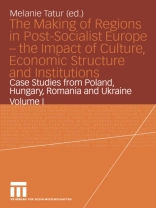1 Research Idea: History and Regional Diversity Post-socialist societies in Europe can be assigned to three "historical regions" (Sziicz 1990) corresponding to their path of historical development. (1) The "East" was shaped by the patrimonial Muscovite state (Pipes 1977) and an estate agriculture with archaic structures at its base (Shanin 1985). The "westernisation" of Russia that began with Peter I exposed the country to western knowledge and education. However, the modernisation of state and society remained limited. The "rationalisation" of the state (Lotman 1997) systematised the administrative structure but did not change the core rules of power, that is to say autocracy and patrimonial bureaucracy. At the same time "modernising" reforms built the state on the basis of feudal eco- nomic relations. It thus blocked the expansion of both universalistic control and market mechanisms. The commodification of production and of labour th was launched as late as the last third of the 19 century. It was stopped by the socialist revolution. The communist elites made use of western technology and science, as well as the institutional and cultural resources of traditional Russia, in order to stabilise their rule and to industrialise the country. The violent breaks of War Communism and Stalinist mobilisation dismantled the traditional institutions of the state, the nobility, the intelligentsia, and peasant society.
Buy this ebook and get 1 more FREE!
语言 英语 ● 格式 PDF ● ISBN 9783322809230 ● 编辑 Melanie Tatur ● 出版者 VS Verlag fur Sozialwissenschaften ● 发布时间 2012 ● 下载 3 时 ● 货币 EUR ● ID 6304417 ● 复制保护 Adobe DRM
需要具备DRM功能的电子书阅读器












